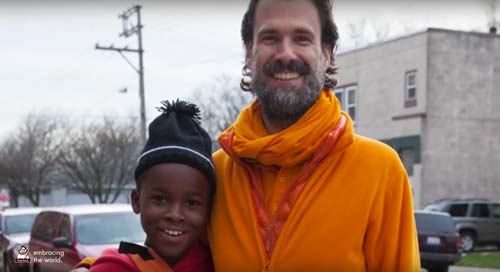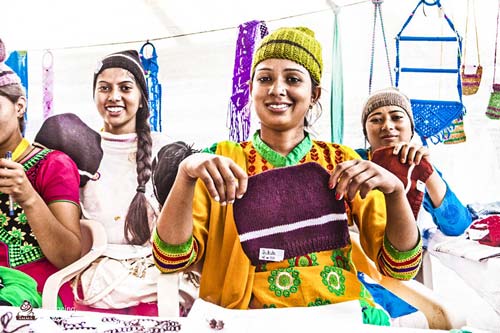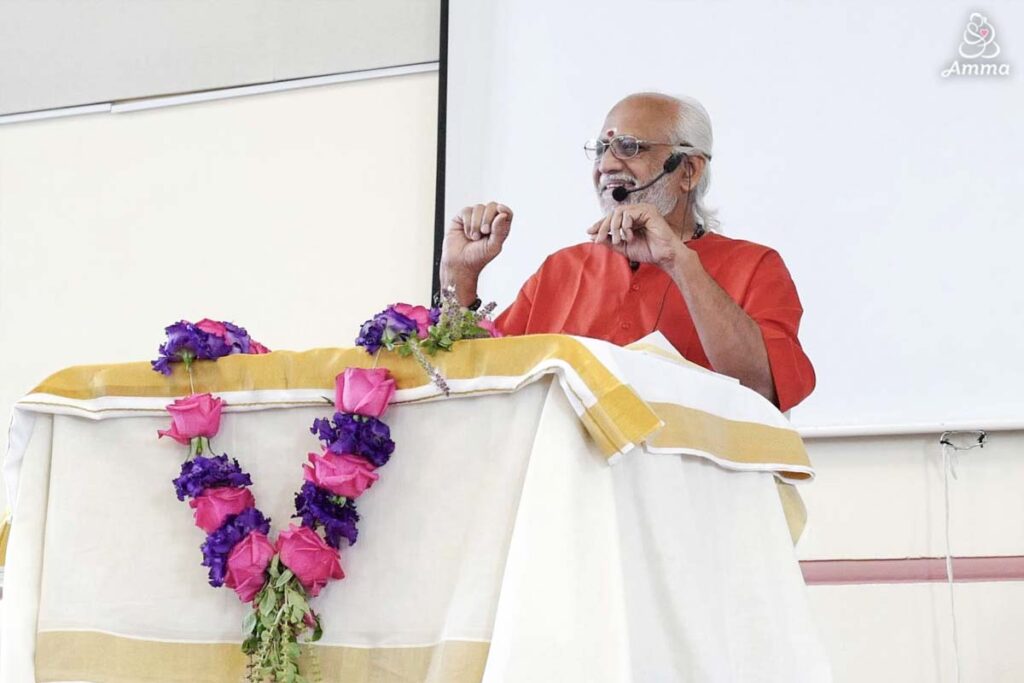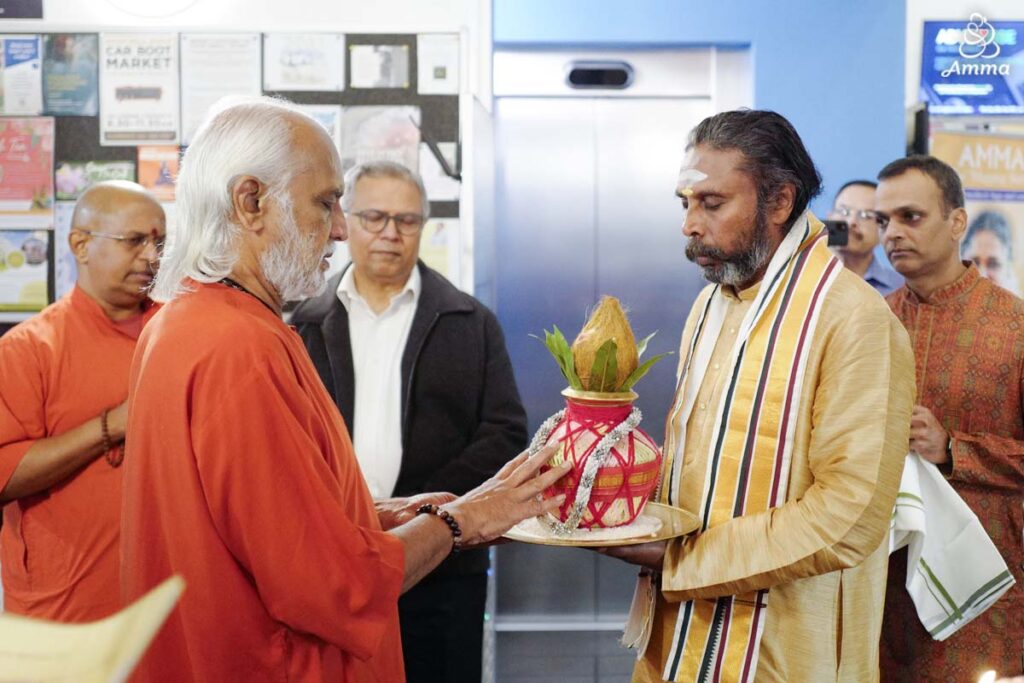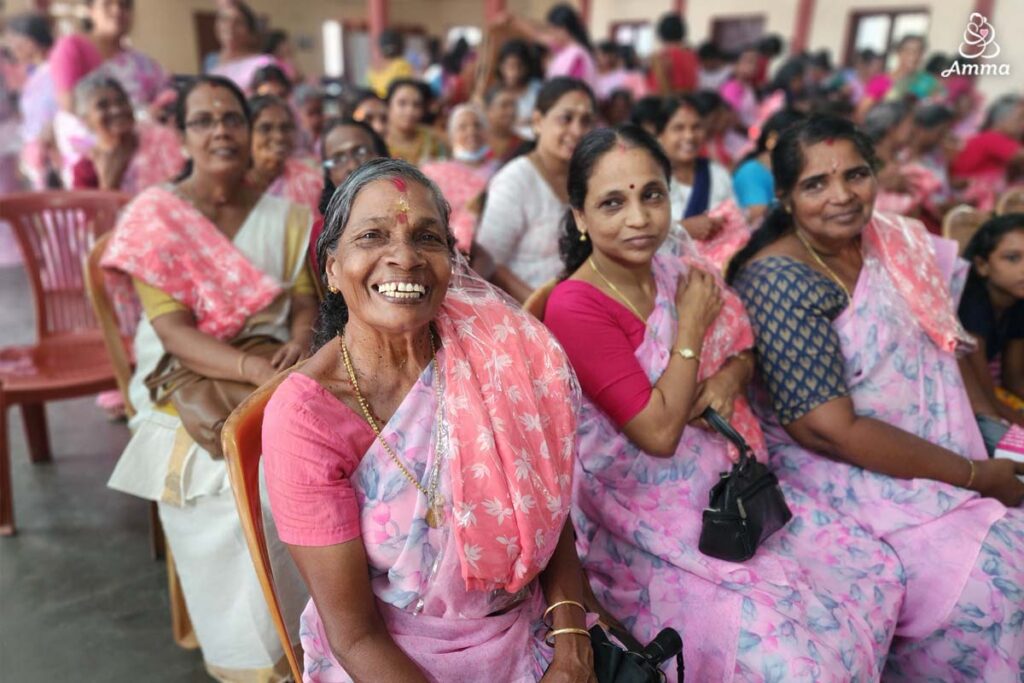The bitterness of Chicago winters just got a little warmer for the students at Waldo Middle School in Aurora, IL. Each day, many children walk long distances to and from school in the freezing cold, without warm clothing. Providing a sustainable and collaborative solution to this problem, women artisans from Uttarakhand were given the opportunity to use the handicraft skills they learned from our own Amrita University’s AMMACHI Labs to knit woolen hats and mittens for the low-income children.
Karen Sneha Moawad, Program Manager at our own Amrita Center for International Programs, explained that “when we approached the principal of Waldo Middle School to ask what they might need, we expected to hear ‘computers, pens, paper, books’ but instead the principle said that what these children really need, because they have to walk to school, are hats and mittens.”
For many affected by the devastating floods in Uttarakhand, India, rebuilding life was much more than picking up the pieces. Many were forced to start over from scratch and find new means for employment. When AMMACHI Labs went to Uttarakhand to bring skill training to the region, the team was amazed at the potential of the women there. Many women excelled in product design and were creative thinkers who explored different products based on local materials. Recently, the women became involved in knitting quality woolen socks and hats. They even found wool wholesalers, developed the product design and were able to secure some international orders.

When the Uttarakhand women learned about the children in Chicago, they sympathized. They understood the coldness of harsh winters and were happy to make warm clothing for the children. They quickly responded, putting their new skills to the test and knitted 900 hats, which were received and distributed by our volunteers in Chicago.

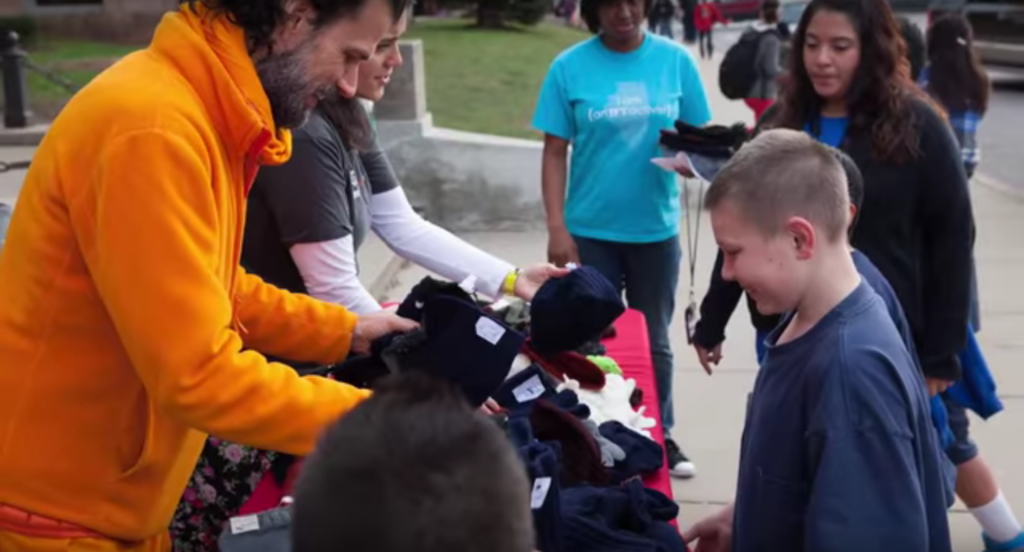
Br. Shantamrita Chaitanya, one of Amma’s senior disciples, and the facilitator of the project in Illinois, understands this story as one of hope. He states that these children “need to feel that there is hope in today’s world. I feel that this project is meeting that need and is meeting people’s material, spiritual, and emotional needs all at the same time.”
By connecting two struggling populations, life has become a little warmer for everyone involved.
